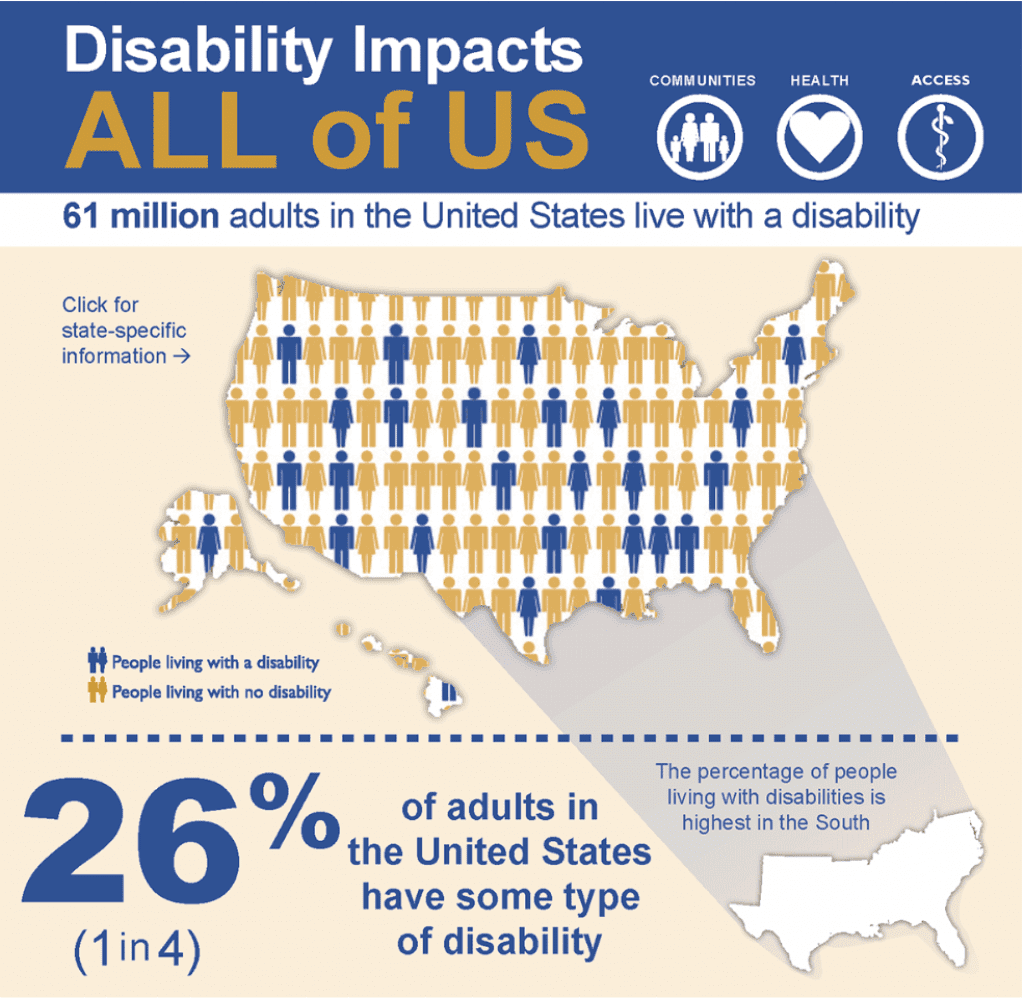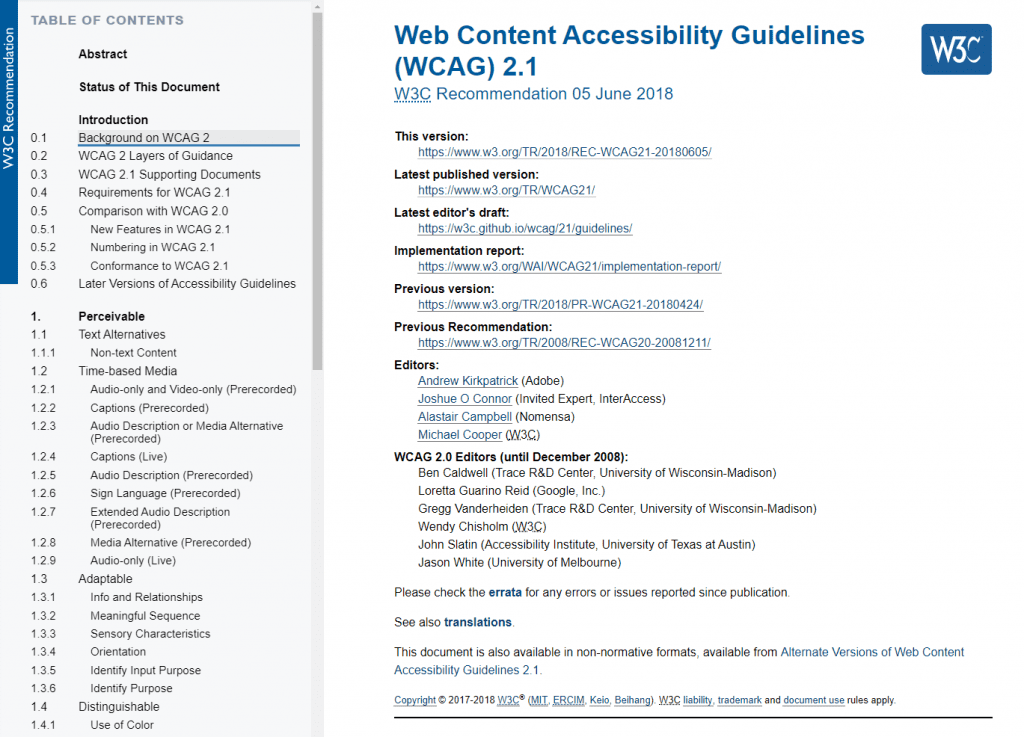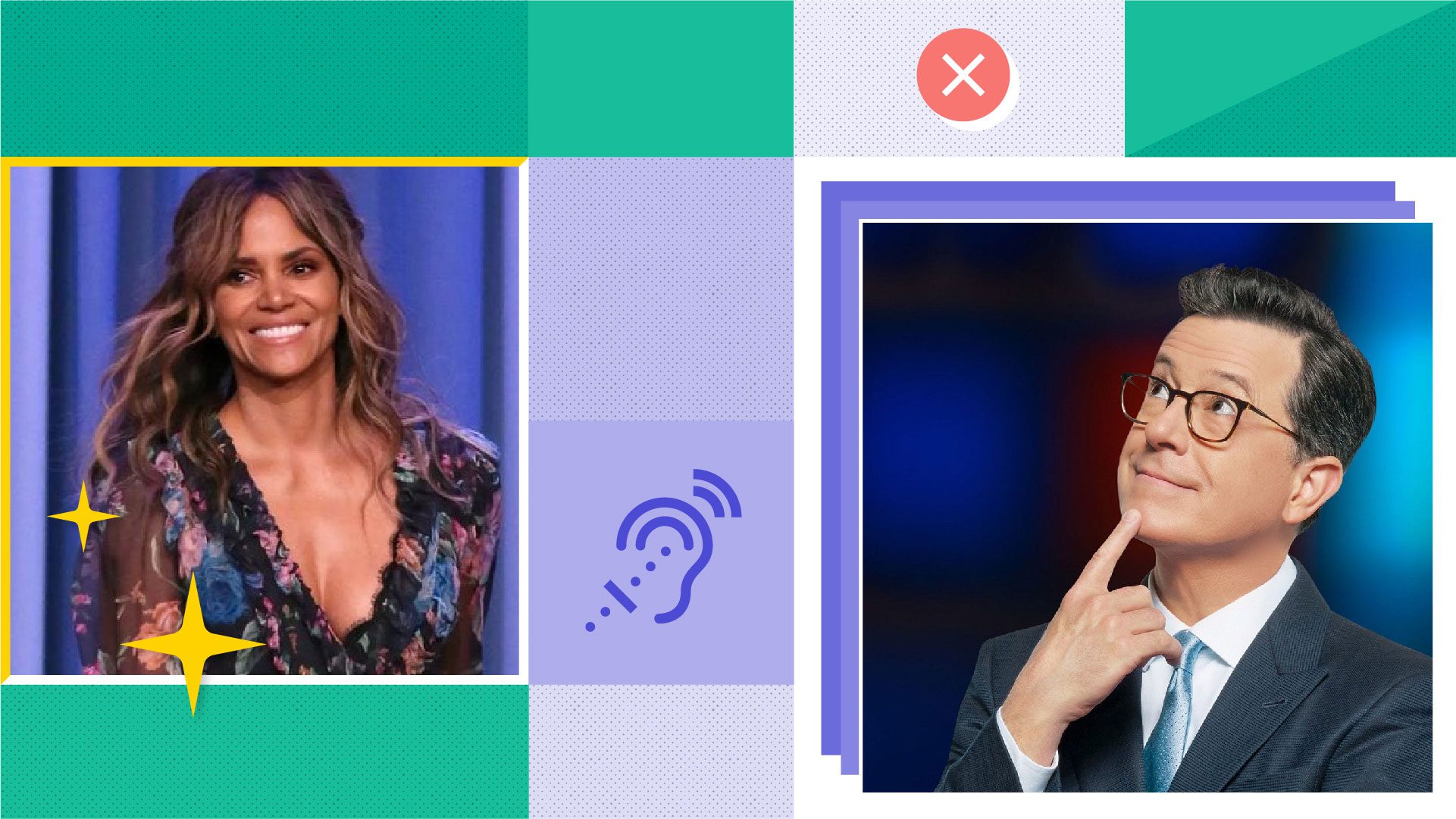WCAG Web Content Accessibility Guidelines and Checklist

Rev › Blog › Accessibility ›
As our world continues to trend digitally, more business is found, secured, and conducted online. To maximize the value of your company’s web presence, your website should be built with a focus on accessibility.
The industry authority resource on the topic is the Web Content Accessibility Guidelines (WCAG) 2.1 developed by the World Wide Web Consortium (W3C). Choosing to follow the guidelines outlined in WCAG 2.1 can help provide a better user experience for your customers.
What is WCAG 2.1?
WCAG 2.1 is the list of best practices for making your website more accessible to all users, including people with disabilities. The guidelines laid out in WCAG 2.1 create a roadmap for business owners to craft a more inclusive online experience. WCAG 2.1 replaced version 2.0 in June of 2018. Business owners current with version 2.0, should note the added standards to be fully compliant. Those completely new to the process can continue reading for actionable steps to reach compliance.

Key Facts About WCAG 2.1
- The World Wide Web Consortium (W3C) develops and maintains the updated web content accessibility guidelines
- WCAG 2.1 is the third (and most current) version of WCAG released in June 2018 to replace WCAG version 2.0
- Guidelines are designed to address those with auditory, physical, speech, visual, learning, cognitive, neurological, and language disabilities
Why is WCAG 2.1 Important to Your Business?
While not a law, the content accessibility guidelines WCAG outlines should not be ignored. In the United States alone, the CDC reports that 1 in 4 (61 million) people are living with a disability. If your website is not prepared to accommodate a diverse group of customers, you have room for improvement. Currently, the Americans with Disabilities Act does not lay out any guidelines for greater website accessibility. Because of this, WCAG 2.1 is the leading resource to help position your web presence for maximum inclusion.

Image Source: Center for Diseases Control and Prevention (CDC)
Reasons You Should Follow WCAG 2.1
- Improves overall user experience for all customers
- Decreases alienation of customers with disabilities
- Can limit the workload on customer service teams
- Increased sales and conversions by increasing reachable customer base
- Preparedness for any new laws requiring compliance
How to Ensure Your Website is WCAG 2.1 Compliant For 2020
Determining whether your website is currently compliant and what changes need to be made can seem confusing at first. Even looking at WCAG 2.1 at a glance can seem overwhelming if you’re not a dedicated web development expert. Long lists of technical jargon can leave even the savviest unsure of where to begin.
Here are three quick steps you can take to get started today.
- Complete an informal audit of your website to gauge your current level of compliance. The easiest way to audit your website and prepare a plan to improve is through the WCAG 2.1 checklist.
- Determine a plan of action based on how compliant you’d like to be. List the criteria you’d like to correct in order of importance.
- Begin making changes and corrections one step at a time. It’s important to note that even one change is a positive step in the right direction. The road to compliance does not need to be traveled overnight.
Once you’ve completed your list of changes, evaluate your website again with the same auditing checklist. If any issues are still unfixed, repeat the process until you’ve achieved the level of compliance you desire.
Interpreting the Content Accessibility Guidelines 2.1
The official documentation for the WCAG 2.1 can seem overwhelming due to jargon, formatting, and the overall volume of information. But with a few bits of information, it becomes more digestible and effective to use. There are four topics you should better understand for greater success working with WCAG 2.1. These include the four principles of compliance, guidelines, success criteria, and levels of compliance.

The Four Principles of Compliance
The four principles of compliance are the four main topic areas where web development teams and business owners should focus on. Each area encompasses several equally important ways you can improve the accessibility of your website.
Perceivable
The list of guidelines outlined in the perceivable section of WCAG 2.1 includes fixes for how information is perceived. This deals with making all images, videos, audio files, and text easily perceivable by all users. For example, this includes things like:
- Making sounds easier to hear by providing options to separate out background noise
- Providing alternates or enhancements for prerecorded video files like the audio caption services we provide at Rev
- Including instructions that are not fully dependent on shapes, colors, sizes, etc.
- Providing alt text for images
- Ensuring a proper contrast ratio between images, text, and the background
Operable
The operable compliance principle covers the interactive parts of your company’s website. As you can imagine, this is especially important as customers can’t work with a website they’re unable to interact with. This includes fixes like:
- Allowing all web functions to be initiated from a keyboard
- Making any content limited by time constraints adjustable
- Providing additional means for users to locate where they are on your site
Understandable
The user interface and the information you provide need to be as understandable and digestible as possible. Failure to do so can alienate people with disabilities. Suggestions in this principle category include:
- Providing means or a mechanism for users to define unusual words including idioms and jargon
- Errors created by user input should be made clear to the user and explained sufficiently
- Navigation throughout the site follows a consistent process
Robust
By definition, the W3C says, ” Content must be robust enough that it can be interpreted by a wide variety of user agents, including assistive technologies.” In other words, your web content should include enough detail to enable more users to utilize it. This includes changes like:
- Status messages on your website are capable of being presented through assistive technologies
- Content using markup languages should have complete start and end tags and be nested properly
Guidelines
Within each principle topic area of the WCAG 2.1, you’ll find a list of guidelines for improving your website. The 13 guidelines laid out throughout the document are the main goals business owners and developers should aim to achieve for full compliance.
Success Criteria
Nested under each guideline, you’ll find success criteria, which enable you to gauge your successes and where improvement is needed. The success criteria are the nitty-gritty details that help to achieve the overarching guidelines in each principle section.
Levels of Compliance
Each success criteria will be tagged with a corresponding level of compliance. Within the program, there are three levels of compliance — level A, level AA, and level AAA. Level A compliance is associated with the most critical elements needing adjustment. These should be your primary goal. As you move up the levels to the highest (level AAA), the requirements become stricter.
Getting Started with WCAG 2.1 Compliance Today
Understanding the importance of WCAG compliance is the first step in moving your business to the next level of inclusivity. Bear in mind that not all changes need to be made at once. Every individual step you take is a step in the right direction towards including more people. Start by auditing your website using the attached checklist and begin developing a plan of action.
Download Our Free WCAG Guidelines Checklist



